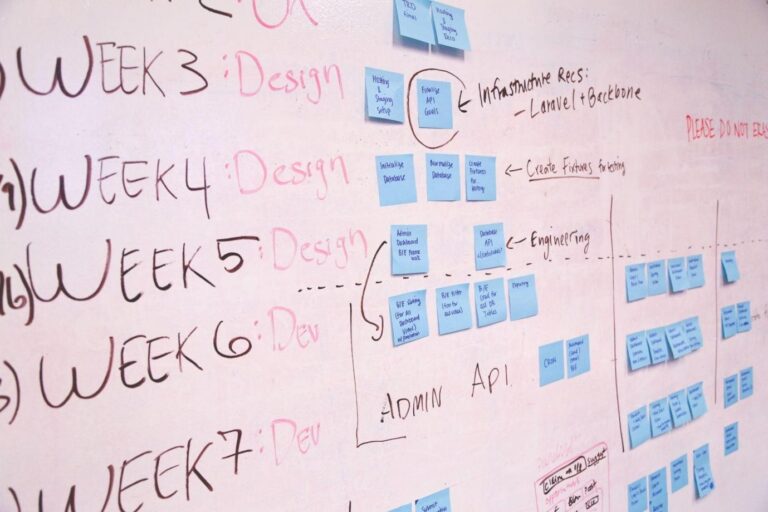
Promoted by Clovine
Project managers have a lot on their plates. They manage everything – from talking with project stakeholders to working with vendors. They’re also in charge of leading the project team and ensuring everything runs well.
You can use a project management checklist to ensure you don’t forget any steps or squander funds by duplicating a function. You can also add or create your items to this list.
If you’re a project manager, you are at the right place as we have the complete checklist to make sure you’ve crossed all of your t’s and dotted all of your i’s.
What is Project Management?
The process of planning, organizing, staffing, managing, and controlling the work of a team to achieve certain goals and meet particular performance standards is known as project management. To guarantee that all projects run smoothly and successfully, a project management system follows a specific set of procedures.
The 7-Step Checklist To Manage Your Projects
1. Consider Your Strategy as a Blueprint for Stakeholders
Every project requires a plan with clearly stated objectives that should not alter after the first phase is done. During the initial project planning process, all stakeholders who will benefit from the project’s outcome or be involved in its execution should be identified and their needs articulated.
It’s not right to simply assume a stakeholder’s needs and objectives. Before you begin sketching out your project plan, communicate with them to ensure that you have a thorough understanding of the project, as well as the abilities and resources of everyone on the team.
2. Make a Checklist of Objectives for the Project
Make a list of all of the deliverables. Your list should segregate the overall project into smaller tasks that can be assigned to particular team members, with anticipated deadlines for each deliverable or task included.
Ensure you gain clarity on the deliverable’s approval procedure. Understanding your client’s internal approval procedure is crucial while working on a project, so you’re not startled by delays or slowed down by competing viewpoints.
3. Have a One-on-One With Your Team
Individuals and/or teams that are assigned deliverables should be identified by name, and their roles should be clearly defined. You wouldn’t want misunderstandings to cause delays and require the team members to redo their work.
Initiate a kickoff meeting with your team to discuss your offensive strategy. Request that they assist you in determining the best method for completing the task. This will not only help you be more efficient, but it will also help you get their support because they will feel more invested in the process.
Using a project management app to keep everyone on track and save all papers and interactions in one location might be beneficial.
Consider using a team inbox email solution instead of continually passing large conversation threads back and forth if you use email to talk about projects. This will allow you to manage emails that require project-related attention to team members as appropriate.
4. Recognize Concerns
Determine the dangers that your project entails. Consider what you’ll do if anything takes a lot longer than you thought or if the prices are far more than you intended.
You don’t need a formal plan in place for every possible adverse event, but you should spend some time with your team brainstorming what could go wrong. Then, rather than being caught off guard afterward, you may do everything you can to avoid such risks from the start. Risk considerations can also have an impact on your budgeting.
5. Set a Budget
Details about the project cost and expected budget should be included with your list of milestones and deliverables. Refrain from allocating huge sums of money to large projects without first determining how the money will be used.
This will assist your team in comprehending the resources available to them to complete the task. These amounts can be estimates rather than absolutes while you’re creating your initial budget.
You may need to seek quotations from a few different vendors for particular things. If you need to make adjustments to the bigger project due to financial limits or your vendor doesn’t offer exactly what you expected, it’s good to mention the agreed-upon project scope in your budget paperwork briefly.
6. Include Milestones in Your Plan
Use your list of deliverables as a starting point for adding milestones and tasks that must be performed to achieve the overall goal. Establish acceptable timeframes, taking into account the productivity, availability, and efficiency of project team members.
7. Establish Rules for Progress Reporting
These reports can be produced on a monthly, weekly, or daily basis. A cooperative workspace, either online or offline, should be set up for your project so that all parties can efficiently track its progress.
Make sure you have a communication plan in place— write down how frequently you’ll update stakeholders on progress and how you’ll convey information, such as during a weekly meeting or by email every day.
To guide your reports, it’s best to make use of the structure you established when you selected your milestones. If you need to communicate progress, try not to reinvent the wheel or waste time preparing new reports. Remember that a project management system can keep stakeholders informed without clogging your inbox or losing talks in protracted Slack sessions.
Conclusion
Staying organized and communicating effectively are the keys to successful project planning and management. Whether you use project management software or not, consider where and how you’ll maintain all of the materials and resources related to your project. If possible, keep everything in one location. Best of luck!